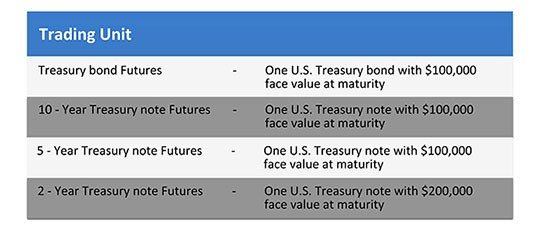Atlas Capital Advisors Factor Model Basics
Post on: 16 Март, 2015 No Comment

Factor Model Basics
At Atlas Capital Advisors LLC, we utilize a multiple-factor investment decision framework. Using statistical filtering and ranking criteria based on these factors helps determine a specific asset allocation. Our process drives us to choose stronger companies over weaker ones, allowing for higher expected returns while working to lower risk.
(Note: Equities are only part of a diversified portfolio. For information on Atlas’s fixed income philosophies, click here. )
Academic Foundation
The traditional asset pricing model, known formally as the Capital Asset Pricing Model (CAPM), uses only one variable, beta. to explain the returns of a portfolio or stock as a function of the returns of the market as a whole.
In 1992-1993, Eugene Fama and Kenneth French (University of Chicago) published several academic papers that provided investing concepts expanding on the classic Capital Asset Pricing Model. Fama and French began with the observation that two classes of stocks have tended to do better than the market as a whole – stocks with a high book-to-market ratio (typically called “value” stocks), and small cap stocks. They showed that over long periods of time, 90% of returns from diversified portfolios are explained by three factors: beta. valuation and size. The Fama-French model is:
The graph below gives a analytical representation of historical stock returns ranked by a valuation factor (price-to-book). Fama-French ranked stocks on a periodic basis in deciles from lowest to highest price to book ratios. The theory holds that re-balancing portfolios on a monthly basis into those stocks with the lowest price-to-book ratios will produce higher expected returns.
In 1997, Mark Carhart, a student of Eugene Fama, did a study controlling for common factors influencing returns and found that they generally explained persistence in portfolios. Carhart then extended the Fama-French model with an additional factor – momentum. Stock momentum is the concept that a stock that has performed well recently will continue to perform well and that one that has performed poorly will also continue to perform poorly. The Carhart four-factor model uses beta. valuation. size and momentum.
Similar to the previous graph, Carhart ranked stocks into deciles from best momentum results to worst. The thesis holds that periodic re-balancing into those stocks exhibiting the best momentum will produce higher expected returns.
Alpha is excess return over what was predicted in the CAPM model. Fund managers are typically paid to generate this alpha. The Fama-French and Carhart models show that, in fact, most alpha is attributed to investing in small, value companies with price momentum. In that case, there is no reason to pay excessive fees to mutual fund and hedge fund managers for their stock picking .
The Atlas Capital Process
We recognize that no model is infallible and believe that human behavior is impossible to quantify. However, the Fama-French and Carhart findings are extremely useful variables to use for screening potential investment candidates to include in a diversified portfolio. Atlas Capital Advisors utilizes the Carhart model to create equity portfolios with the highest expected returns considering a combination of valuation, size and momentum criteria. The process allows not only for higher expected returns and lower risk. but also a lower fee structure .

Our investment decision framework ranks equities based on the below factors:
Value Factors
- Price-to-Cash Flow (P/CF) ratio: The P/CF ratio is the ratio of a company’s share market value to its operating cash flow per share. Operating cash flow (OCF), as the name implies, is the cash a company earns from its normal business operations. One standard definition: OCF = EBIT (Earnings Before Interest & Taxes) + Depreciation – Taxes. OCF is a good measure of the strength of a company. In theory, companies with a lower P/CF will tend to perform better than those with a higher P/CF. We prefer to invest in companies with consistent cash flow and solid cash flow margins.
- Price-to-Book (P/B) ratio: This is the ratio of a company’s market value relative to its GAAP book value. Book value is found on a company’s balance sheet and represents the total value of a company’s assets minus the value of its debt and other liabilities. We focus on this metric when analyzing the value of a company. We prefer to invest in companies with low price to book ratios.
- Price-to-Earnings (P/E) ratio: The P/E ratio is the ratio of a company’s share market value to its net income per share. The P/E ratio is a widely known concept but we prefer the inverse ratio, the E/P ratio or earnings yield, for comparative analysis to bonds, REITs, preferred stocks and various arbitrage strategies.
Momentum Factor
Behaviorally, people tend to hold on to and buy stocks that have consistently appreciated (even when a company has a disappointing quarter). Similarly, a stock that continues to plummet tends to cause panic, resulting in more people emotionally selling as price falls in a downward spiral. We rank all securities based on their intermediate term historical performance and as well trailing 60-day and 30-day stock price performance. The factors primary importance lies in attempting to quantify human behavior tendencies as part of an investment thesis.
Company Size Factor
The size of a company is represented by its market capitalization (Number of shares outstanding * market price per share). Typically, small companies tend to be more risky and produce higher excess returns compared to large companies. This is not always the case, and deviations from this rule can dramatically occur for long periods. However, company size, when considered alongside other key factors, can help the investment decision process.














